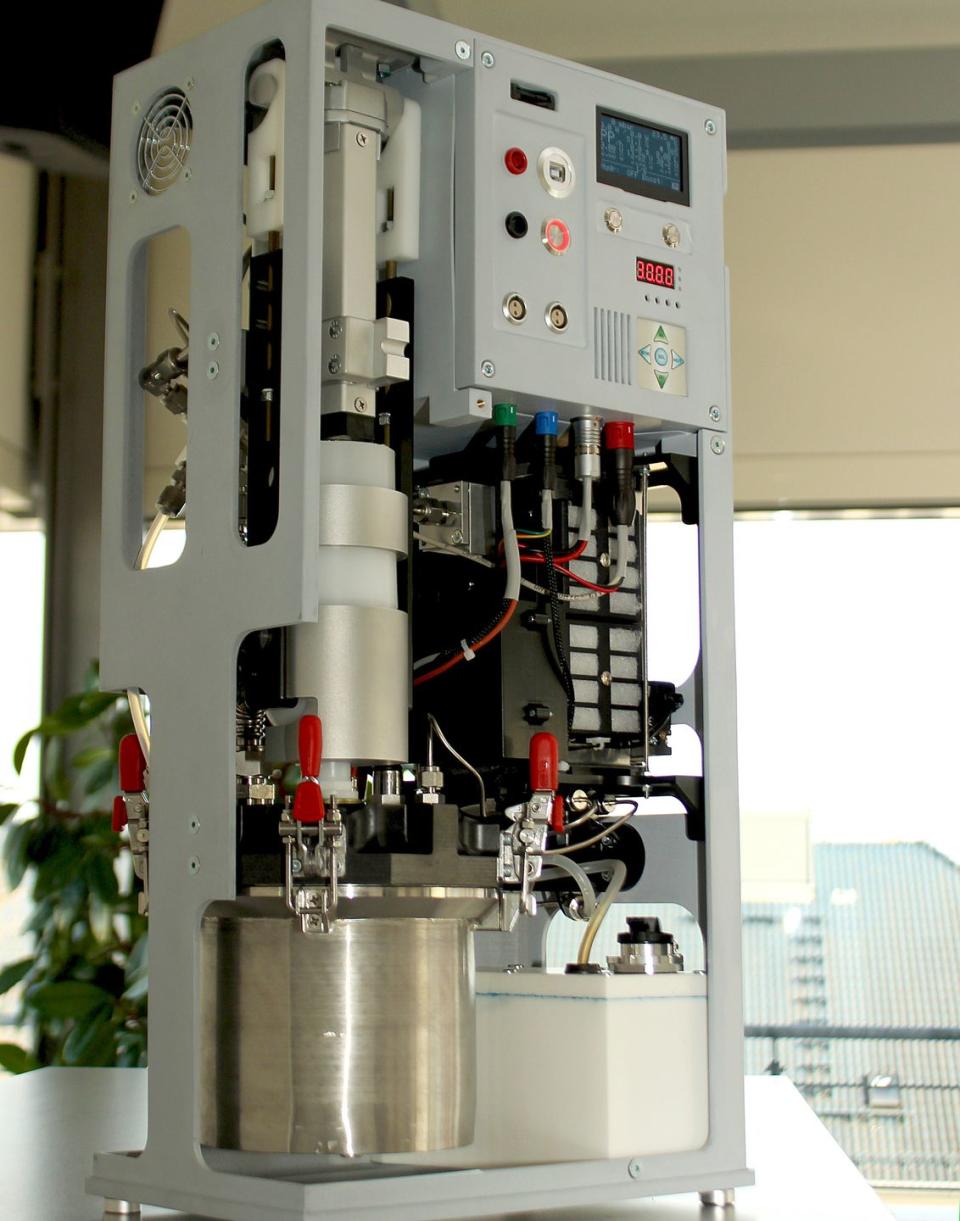Hydrogen in Paste Form Could Power the Devices of Tomorrow
Hydrogen in paste form could power the devices of tomorrow.
The paste mixes hydrogen with magnesium and additives to form a smooth paste.
From there, paste cartridges can power devices, its makers say.
Could a goopy new paste be the thing that finally unlocks clean hydrogen’s energy potential? The makers of "Powerpaste" think so.
➡ Join Pop Mech Pro and get exclusive answers to your most burning science questions, starting NOW.
Scientists from the Fraunhofer Institute for Manufacturing Technology and Advanced Materials IFAM in Dresden made the sludgy gray paste, which heats hydrogen with magnesium and stabilizers so the hydrogen can be stored in cartridges even at room temperature. That's it in the photo above.
What results is a stable medium that its makers say is 10 times more energy-dense than lithium-ion batteries, New Atlas's Loz Blain writes:
“When it comes time to release the energy, a plunger mechanism extrudes the paste into a chamber where it reacts with water to release hydrogen at a dynamically controlled rate, which then feeds a fuel cell to create electrical power with which to run an EV powertrain or other device. Part of the paste's impressive energy density comes from the fact that half of the hydrogen released comes from the water it reacts with.”
Think of this like a hydrogen-flavored can of Campbell’s condensed soup: it reaches its full potential when combined with water and diluted to consumer strength. Because the paste is stable at temperatures up to almost 500 degrees Fahrenheit, it can carry larger amounts of hydrogen in a smaller form factor that’s also safer at almost any temperature in supply chains around the world. Baking-proof parchment paper will catch fire long before this hydrogen paste will.
The paste is made by combining hydrogen and magnesium into magnesium hydride, then adding an organic compound called an ester (formed by a reaction of alcohol and acid) as well as a metal salt (formed by a metal and usually an acid).

Esters are often used as softeners, polymers, and different kinds of additives. Metal salts, meanwhile, are used as dyes and pigments, for example. Both are “conditioners” that help turn the magnesium hydride into a stable, uniform paste.
The hydrogen marketplace of ideas is filled with hypothetical solutions to some of hydrogen’s distribution problems, but all have varying amounts of problems before they can be used widely.
➡ Cool Stuff We Love: The Best Microscopes for Every Age
This technology sounds really promising and special, but there are huge logistical steps in terms of preparing the paste, manufacturing cartridges for it to go in, and making the refueling and disposal or recycling infrastructure for the spent cartridges of mostly magnesium.
That’s on top of the hydrogen industry’s bedrock problem, which is that hydrogen is chemically and financially costly to separate into usable form. Today, most fuel hydrogen is processed from fossil fuels. Clean hydrogen is rare and must be ramped up a great deal before hydrogen can compete in a truly renewable energy scene. When that happens, gray goop should be ready for its closeup.
🎥 Now Watch This:
You Might Also Like

